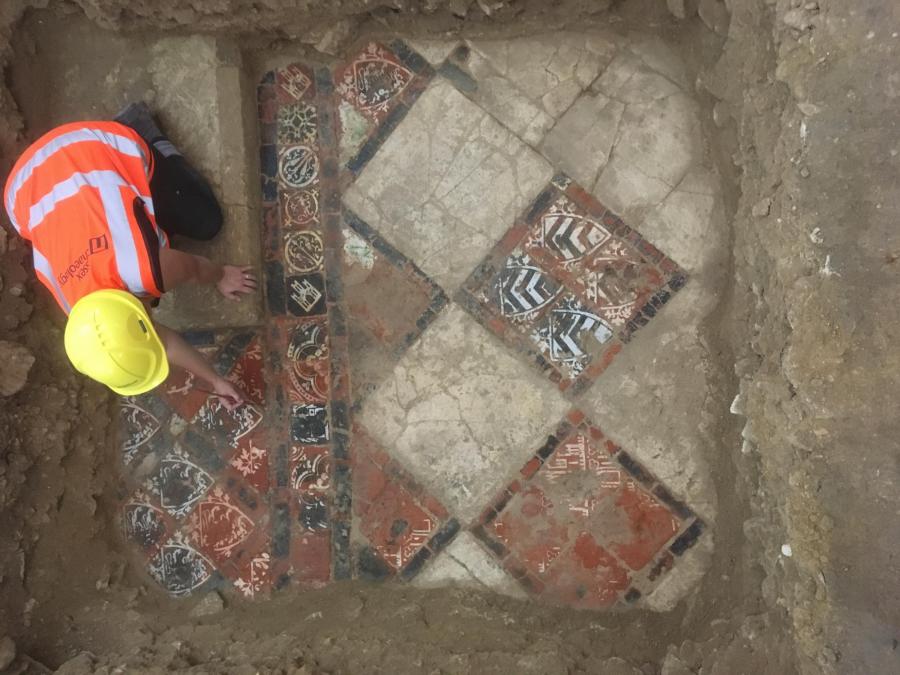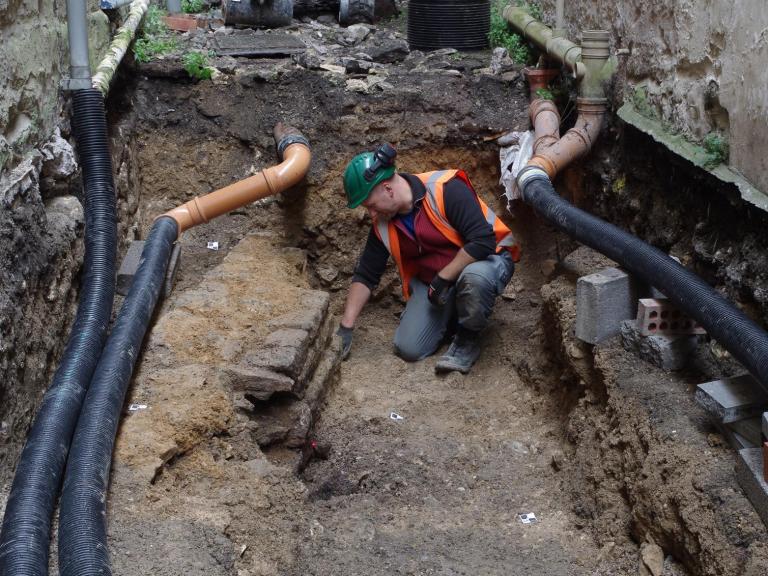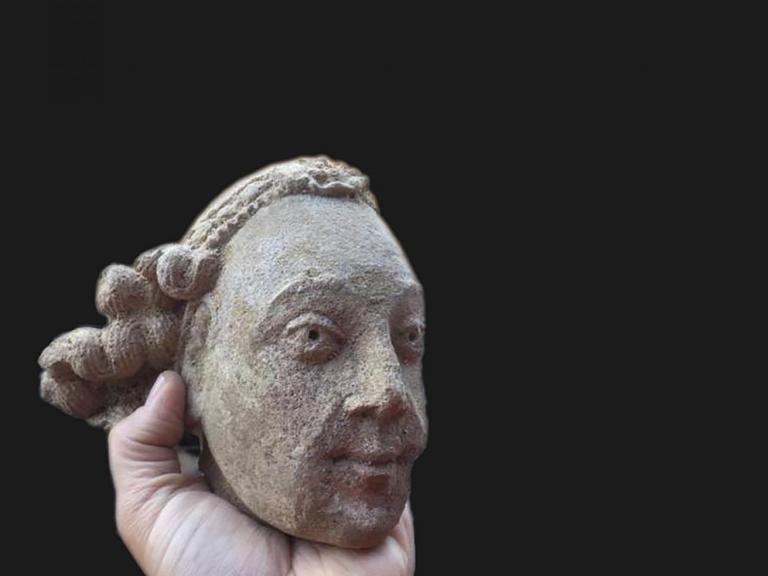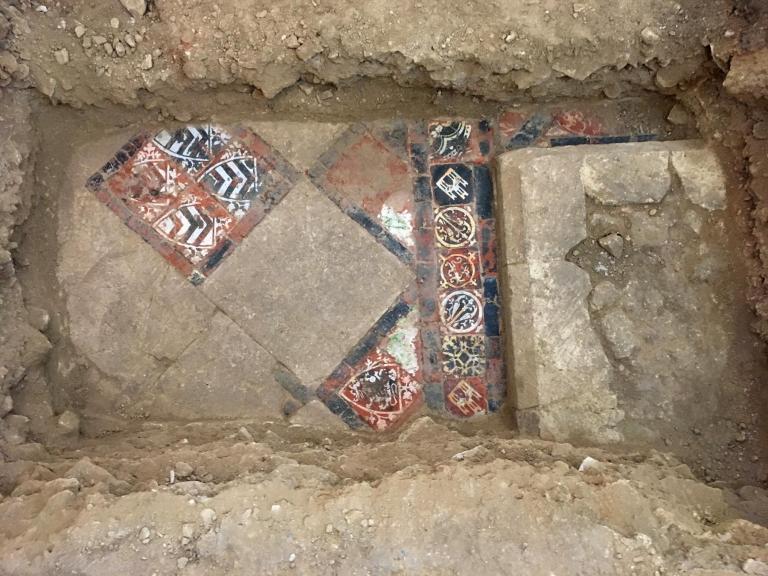Wessex Archaeology has been working at Bath Abbey since Spring 2018, delivering archaeological works ahead of construction works for the £19.3 million Footprint Project, funded by the Heritage Lottery Fund.
The team has deployed a suite of cutting-edge recording and analytical techniques throughout this exciting project. Most significantly, we have used photogrammetry to record all excavated areas digitally, producing one of the most extensive archaeological recordings ever created in 3D.
Take a journey through time and experience five of the key sites excavated for yourself!
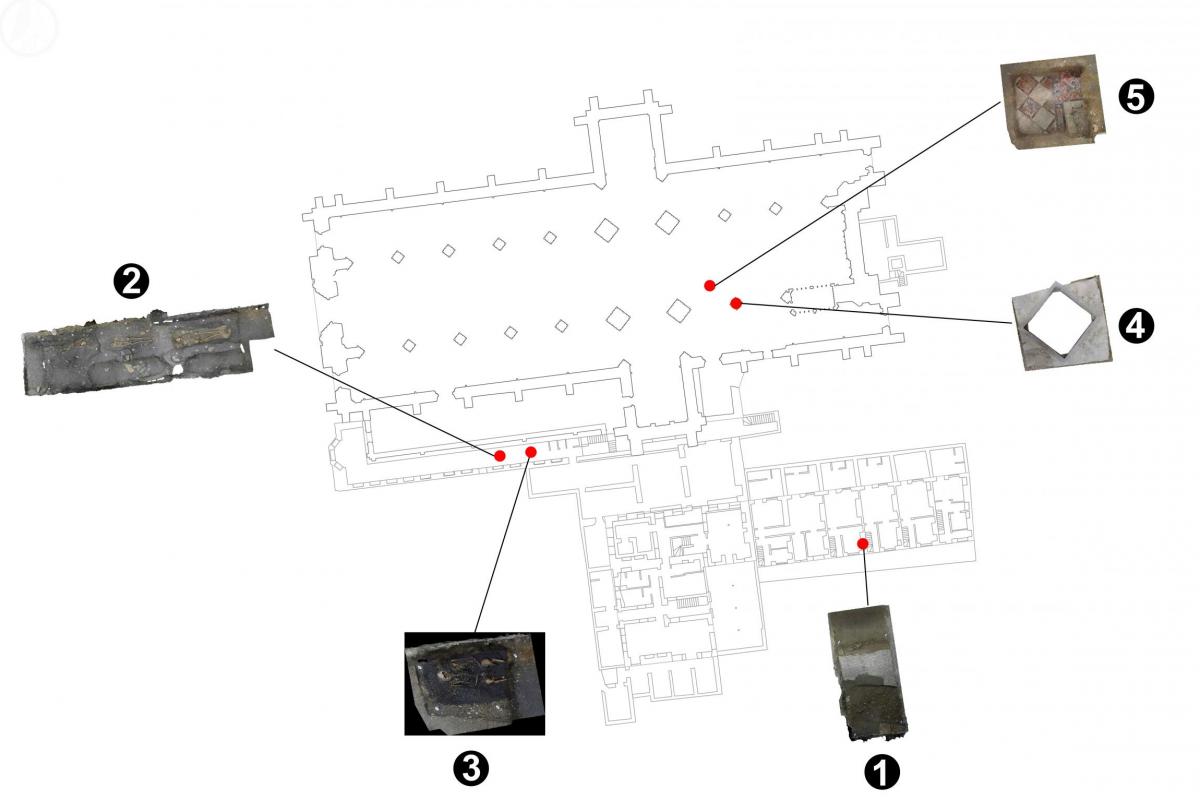
1. Roman Tessellated Floor
This fantastic Romano-British tessellated floor was discovered below a layer of late Roman demolition material during the excavation of a foundation trench within the basement of what is now the Kingston Buildings.
The in-situ tiles, or ‘tesserae’, are made of creamy coloured limestone cubes that averaged 20-30 mm in size. A 1.5 m wide strip of the floor survived along the south side of a substantial Roman building; the rest of it was destroyed by the construction of the Norman cathedral in the 11th–12th century AD.
Rich in natural resources, Bath was an attractive prospect for the invading Romans in the 1st century AD. There was little or no resistance when they arrived in Bath (around 44AD - 47AD); the local Bath tribe, the Dobunni, had already been trading with the Empire via routes to the south coast and into Gaul, and the tribe’s elites may have been open to the benefits of Roman rule.
The Romans built a temple at Bath, and in an effort to integrate Roman cultural beliefs into the local area, dedicated it to the local goddess Sulis and the Roman goddess Minerva, both associated with healing. A bathing complex was constructed around the hot springs, this formed the core of the Roman settlement of Aquae Sulis.
2. Anglo-Saxon Monastic Cemetery
These Anglo-Saxon burials were excavated 3 m below the street to the south of the Abbey and include rare ‘charcoal burials’. Previously excavated burials from the cemetery have been radiocarbon dated to the 8th/9th century AD.
Anglo-Saxon Bath was an important settlement for early Christian monastic activity. Evidence indicates that there has been a Christian monastic community in Bath since at least the 7th century AD. It may have been founded on an earlier religious house; there is good evidence for the Christianisation of Romano-British temple sites from the 4th century, and this may have been the case with Bath.
It became increasingly important and developed in the later Anglo-Saxon period, culminating with the coronation of Edgar, the first king of all the English, in AD 973. Edgar chose Bath, with its famous church and royal connections to both Wessex and Mercia, as the venue for his coronation.
3. Rare Anglo-Saxon Charcoal Burial
Found within a monastic cemetery 3 m below street level to the south of the Abbey. This unusual burial rite, thought to be indicative of high status, entailed laying the body or coffin on or under a layer of charcoal, in some cases both. The reasoning behind this remains obscure; it has been suggested that it may be associated with ideas of physical and/or spiritual cleanliness and protection.
4. The Norman cathedral
During excavations, we discovered that the foundations of Bath Abbey incorporate reclaimed stone from the demolished Norman cathedral that preceded it. This is perhaps most strikingly seen in this reused Norman column capital, which has been built into a 16th-century pier base.
During a turbulent period in history following the death of William the Conqueror, the town and its abbey was reputedly bought from the crown by the Bishop of Wells, John of Tours. After moving his Bishopric and See to the town, he set about constructing an ambitious programme of works which included a magnificent new cathedral. The new cathedral was consecrated nearly 70 years later in the 1160s and was thought to measure over 100m in length.
5. Colourful Medieval Floor Tiles
Wessex Archaeology’s team uncovered this wonderfully preserved early 14th century floor 2 m below the floor of the present-day Abbey church, comprising of vividly coloured encaustic tiles, located in what would have been the medieval cathedral’s nave.
The tiles are attributed to the Wessex School; a series of designs derived from tiles laid at Clarendon Palace. Other examples of these tile designs are known from Bath, Wells, Bristol and Glastonbury.
The three golden lions on a red shield is the coat of arms of the Plantagenet kings. The three red chevrons on a gold shield is the coat of arms of the de Clare family, powerful Norman marcher barons who held the earldoms of Gloucester and Hertford as well as land in both Wales and Ireland. The family line came to an end when Gilbert de Clare, 8th Earl of Gloucester and cousin of Edward II, died at the Battle of Bannockburn in 1314.
